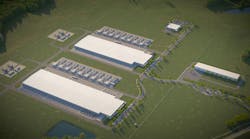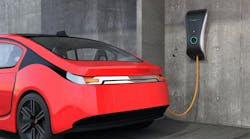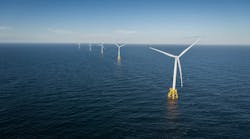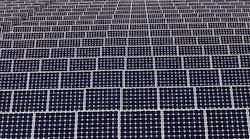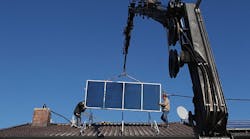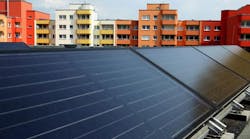Solar plus storage has emerged as the most promising near-term option for distributed power generation, and appears strong enough to keep driving deeper into the U.S. market. Suppliers across the spectrum are acquiring and partnering to put the right packages of equipment and services in place to meet the expected growth in demand. Two announcements over the past couple of weeks highlight the shift.
Solar panel manufacturer SunPower Corp., San Jose, Calif., and energy storage supplier Sunverge Energy Inc., Stockton, Calif., announced an exclusive agreement to begin offering a solar and battery package to residential customers in the United States and Australia in 2015.
Sunverge’s system uses batteries, power electronics and multiple energy inputs in a UL-certified appliance that is remotely managed and controlled by software running in the cloud.
SunPower also announced a $20 million investment in Tendril, a Boulder, Colo. maker of home energy management software that will now be able to use SunPower’s huge flow of solar data to further develop its platform for solar-related services for utilities and other energy service providers.
Combined with its recent acquisition of SolarBridge, which adds integrated microinverters to the SunPower offering, the company looks to play a major role in the energy market’s shift to distributed power.
“Over the next five years, we expect to see a disruptive shift in the energy market, with solar power, energy storage, smart devices, energy management technologies and electric vehicles being combined,” said SunPower CEO Tom Werner in a release. “As we join Sunverge’s adaptable and reliable storage solutions with SunPower’s high performance solar technology, we’re giving consumers a ‘Smart Energy’ solution that will deliver unprecedented levels of personalization, value and control. Providing this integrated solution to utilities allows them to access the benefits of rooftop solar and storage at significant scale.”
First Solar, a Tempe, Ariz.-based giant in utility-scale solar power plants, meanwhile, made its first move toward the residential market with an agreement to invest in Clean Energy Collective (CEC) and market community solar systems to residential and business customers on behalf of utilities, as an alternative to rooftop solar. CEC has been a pioneer in developing the community solar model, through which a broad range of customers have access to solar energy regardless of the suitability of their rooftop or property ownership status.
“Through this relationship, CEC will accelerate the rollout of community solar generation aided by the efficient access to capital and innovative hardware solutions afforded by First Solar,” First Solar said.
Solar was the second largest source of new electric power generation capacity in the U.S. (behind natural gas) for the first three quarters of 2014, according to a recent report from the Solar Energy Industry Association (SEIA).
Distributed generation is becoming an increasingly accessible option for buildings of all sizes in many local markets, from small homes to massive facilities, and a growing potential market for electrical suppliers.
The global market for distributed generation technologies (small scale solar, wind, fuel cells, microturbines, microgrids and so forth) is on a steep growth path. Navigant Research projects global annual installations will double by 2023.
A lot of the action will be in the solar part of the market. Analysts from IHS project that installed solar-plus-storage will grow ten-fold in the next four years — from 90 MW in 2014 to 900MW in 2018.


